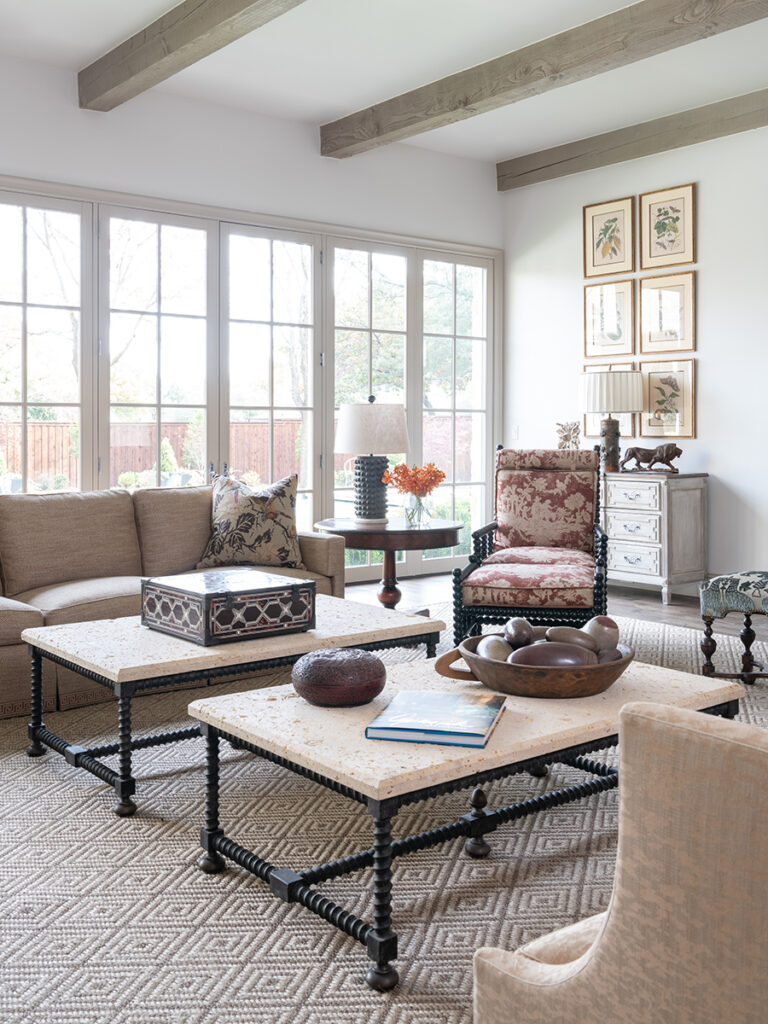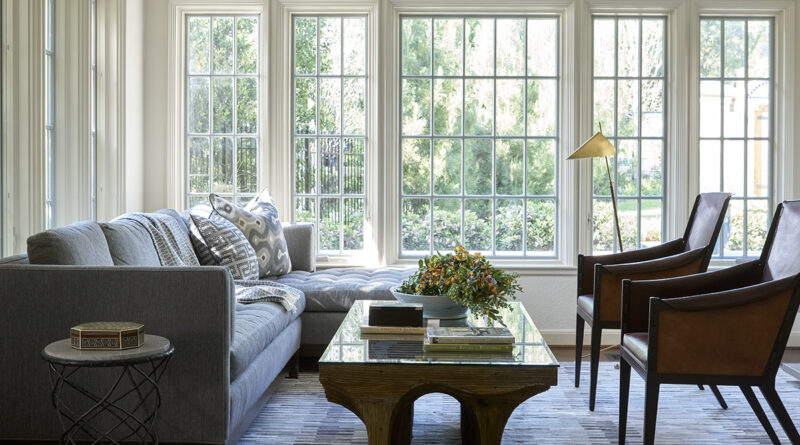Three Key Decisions Before Buying a Coffee Table
You may think that your sofa is the statement piece of the living room, but here at Chambers Interiors, we consider the coffee table equally important.
A coffee table that’s the wrong size or style can throw off the whole space, so choosing one shouldn’t be an afterthought. As an interior designer, I evaluate any coffee table by the following criteria:
1. Material
A transparent acrylic or glass coffee table can help a small room feel more open. Glass is not a good choice for families with young children or pets. Not only is it fragile, prone to fingerprints, and easy to scratch, but any sharp corners are a hazard.

Wood tables introduce texture and warmth to the room. Mahogany and walnut are classic choices for traditional homes, while Cirrus Oak is a good fit for modern spaces. I recommend using a contrasting material, such as marble, glass, or metal, when you already have wood floors or stunning wood furniture in the space. Marble is a popular choice that instantly adds a touch of elegance to a room.
2. Shape
Rectangular and oval-shaped tables are both smart choices in narrow spaces. A round table will soften the look of your room, especially if you have a lot of sharp lines and hard corners.
A square table can fit perfectly into the L-shaped nook of a sectional. Nesting coffee tables, in which one table is tucked slightly underneath a taller one, create more surface area, making them an excellent solution for when you have guests over.
3. Size and Placement
Your coffee table should ideally measure between one-half and two-thirds the length of your sofa. Leave at least a foot-and-a-half of space between the table and the couch for legroom, plus 24 to 30 inches between the table and your TV console or fireplace for walking room. The height of the table should be equal to the seat of the sofa, or slightly below (1 to 2 inches).
Consider contacting an interior designer with access to trade-only resources and the experience to pay attention to easily overlooked small details. Professionals will find the perfectly proportioned table for your space while ensuring that the layout of your room flows beautifully.









